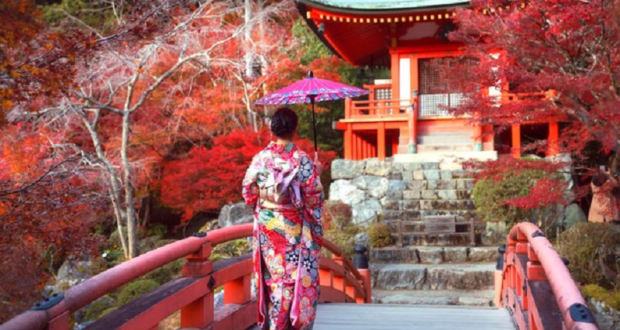Experience the Tourism in Japanese: A Guide to Planning Your Dream Trip
Japan is a country of stunning contrasts – from futuristic cityscapes to ancient shrines, from zen gardens to neon nightlife. It’s no wonder that Tourism in Japanese has boomed in recent years, with over 31 million international visitors in 2019 alone. From the dizzying streets of Tokyo to the tranquil temples of Kyoto, Japan offers an incredibly diverse range of experiences for travelers.
Most Popular Destinations Tourism in Japanese
Tokyo
As the capital of Japan, Tokyo is likely to be your first stop when visiting the country. This sprawling metropolis blends the hypermodern with the traditional, with skyscrapers standing alongside ancient temples. Don’t miss visiting the bustling Shibuya crossing, people watching in Harajuku, and exploring the temples and shrines of Asakusa. Make sure to sample all kinds of Japanese food, from sushi to ramen.
Top attractions: Sensoji Temple, Meiji Shrine, Tokyo Skytree, Shibuya Crossing
Kyoto
Kyoto provides a window into old world Japan, with thousands of temples, shrines, and zen gardens. This city is the former capital of Japan and considered the cultural heart of the country. Spend your days here temple hopping, admiring sites like the Golden Pavilion, Fushimi Inari, and Arashiyama bamboo grove. Visit a geisha district in the evening for tea and entertainment.
Top attractions: Fushimi Inari Shrine, Kinkakuji Temple, Arashiyama bamboo grove
Tourism in Japanese Osaka
Food lovers won’t want to miss Osaka, known for having some of the best and most unique cuisine in Japan. Visit Kuromon Ichiba market to sample fresh sushi and snack on street food specialties like takoyaki and okonomiyaki. This vibrant city also has landmarks like Osaka Castle, the Umeda Sky Building, and the Dotonbori entertainment district lit up with neon billboards.
Top attractions: Osaka Aquarium, Universal Studios Japan, Dotonbori, Osaka Castle
Hiroshima
While most famous for the 1945 atomic bombing, today Hiroshima is a vibrant and forward-thinking city with lessons from the past. Pay respects at the Peace Memorial Museum and Park which documents that fateful day. Other sights include Hiroshima Castle and Shukkei-en Garden. Baseball fans won’t want to miss seeing the Hiroshima Carp play.
Top attractions: Hiroshima Peace Memorial Park, Hiroshima Castle, Mazda Zoom Zoom Stadium
Sapporo
The largest city on the northern island of Hokkaido, Sapporo is best visited during winter when meters of snow transform it into a winter wonderland. Host of the annual Snow Festival, highlights here include ice sculptures, snow rafting, and skiing. Don’t miss the Sapporo Beer Museum and trying the local miso ramen.
Top attractions: Sapporo Snow Festival, Odori Park, Sapporo Beer Museum
Okinawa
For tropical paradise vibes, head south to Okinawa, a chain of islands known for beaches, marine life, and unique culture. Snorkel or scuba dive in the colorful coral reefs, relax on white sand beaches, and explore WWII landmarks. Try unique Okinawan cuisine like saa chicken.
Top attractions: Churaumi Aquarium, Shuri Castle, Zamami Island for beach escapes
Tourism in Japanese But Worthwhile Destinations
While hotspots like Tokyo and Kyoto are essential to visit, Japan has a wealth of lesser known destinations that offer a more authentic and unique experience. Here are some worthwhile places to consider:
Takayama
Nestled in the Japan Alps, Takayama is like stepping back in time to old Japan, with beautifully preserved buildings, temples, and shrines dating back to the Edo period. Wander the morning market, visit the folk village, or take the Hida alpine loop train ride.
Top attractions: Morning Markets, Hida Folk Village, Hida Beef
Kanazawa
Kanazawa has one of the best preserved samurai districts in Japan, along with stunning landscape gardens and teahouse districts. Top sights include Kenrokuen Garden, Nagamachi samurai district, and Omicho fish market.
Top attractions: Kenrokuen Garden, 21st Century Museum of Contemporary Art
Hakone
Just a train ride from Tokyo, Hakone is a mountainous region known for hot springs and views of Mt. Fuji. Relax in an onsen, ride the Hakone ropeway gondola, and go for scenic hikes along Lake Ashi.
Top attractions: Lake Ashi, Hakone Shrine on the lake, Hakone Open Air Museum
Tourism in Japanese Naoshima Island
This tiny island in the Seto Inland Sea has been transformed into an outdoor art museum, dotted with installations from artists like Yayoi Kusama. Unique accommodation options include artsy boutique hotels.
Top attractions: The Art House Project, Benesse House Museum
By getting off the main tourist track, you can experience a more authentic side of Japan away from the crowds. The transportation system makes it easy to access these lesser visited gems.
Experiencing Tourism in Japanese Food Culture
One of the main highlights of visiting Japan is experiencing the food culture. Japanese cuisine offers incredible variety and meticulous attention to detail. Here are some dishes and food experiences you won’t want to miss:
Sushi
Sushi needs no introduction – those raw slices of heaven have gained worldwide fame. But sampling sushi in Japan takes it to a whole new level. Look for restaurants with freshest seafood and expert chefs using traditional techniques. Must try: omakase multi-course meals.
Top sushi restaurants: Sukiyabashi Jiro (Tokyo), Sushi Taku (Osaka), Sushi Yoshitake (Kyoto)
Ramen
Slurping steaming bowls of ramen is a beloved pastime across Japan. Regional styles vary – from miso to shoyu to tonkotsu broths. Ramen alley in Tokyo has multiple shops to sample. Try niche styles like mazemen (mixed ramen) and tsukemen (dipping noodles).
Top ramen restaurants: Ichiran (nationwide chain), Ippudo (Tokyo), Hide-Chan Ramen (Sapporo)
Tempura
The Japanese have perfected the art of deep frying. Light, crispy tempura coated veggies and seafood is a sublime experience. Try a multi-course tempura meal with seasonal ingredients. Pro tip: avoid fillers like rice or noodles to fully enjoy the flavors.
Top restaurants: Tempura Kondo (Tokyo), Yamato (Osaka), Kagizen Yoshifusa (Kyoto)
Kaiseki
This refined dining style with multiple small courses highlights flavors, textures, and visually pleasing plating. Originally part of the Japanese tea ceremony, it’s evolved into haute cuisine. Expensive but an unforgettable fine dining splurge.
Top restaurants: Kikunoi (Kyoto), Takazawa (Tokyo), Kashiwaya (Osaka)
Tourism in Japanese Tsukiji Fish Market (Tokyo)
One of the world’s largest seafood markets sees tuna auctions at dawn and mind-boggling arrays of global seafood. Come for sushi breakfast, poke bowls, and street food snacks. A foodie mecca not to be missed.
Pro tip: Look into group tours for easy access. The inner market has since moved but outer stalls remain.
Transportation in Tourism in Japanese
Japan has one of the most convenient and efficient public transportation systems in the world, making getting around easy even without a car. Here are the main options for transportation within Japan:
Trains
The bullet train Shinkansen and local/regional rail lines are the most popular way to travel in Japan. Punctual, fast, and covering the whole country, it’s easy to get around by train. Options include:
- Shinkansen bullet trains – For high speed intercity travel. Requires reserved seats.
- JR lines – Local and express trains on Japan Rail system. Use rail pass for savings.
- Subway/metro – For transportation within big cities like Tokyo, Osaka, Fukuoka.
Buses
Buses fill the gaps in rural areas not covered by trains. Overnight buses are a cheaper alternative to trains for long distances. Companies like Willer Express offer bus passes.
Taxis
Taxis are readily available, especially in cities. Can be pricey for long distances. Avoid during rush hours. Cash or credit cards accepted.
Rental Cars
Driving in Japan requires an International Driving Permit. Roads on the left. Outside major cities, roads are well maintained but not always in English. Parking is limited.
Tourism in Japanese Ferries
For island hopping in parts of Japan like Okinawa, ferries provide essential connections. They’re included in sites like the Japan Rail Pass.
Rail Passes
Rail passes like the Japan Rail Pass offer great value, saving you 30-50% on train fares across Japan. Do the math to see if a pass makes financial sense for your trip.
With a bit of planning, transportation in Japan is smooth and efficient. Apps like Google Maps, Hyperdia and Navitime make navigating easy. The Japan Tourism Agency website has great English language resources as well.
Lodging Options for Every Budget
Accommodation in Japan ranges from luxurious ryokans to basic capsules hotels and everything in between. Here are some top lodging options for every budget and travel style:
Luxury & Boutique Hotels
For opulent stays, Japan offers stunning luxury hotels, many designed by renowned architects and designers. Expect top tier amenities, restaurants and stunning views.
- Park Hyatt (Tokyo) – Palatial hotel made famous by Lost in Translation
- Aman Tokyo – Minimalist urban sanctuary with spa and views
- HOSHINOYA (Kyoto) – Elegant ryokan along the river
Mid-Range Hotels
Reliable Japanese and international chains in the 3-4 star range combine convenience and comfort. Great locations near major attractions.
- Courtyard by Marriott (Popular locations)
- Hotel Gracery (Central spots in cities)
- Daiwa Roynet Hotels (Across Japan)
Budget Hotels & Hostels
For value stays under $100 per night, options include business hotels, Japanese guesthouses, and backpacker dorms.
- Toyoko Inn (Nationwide budget hotel chain)
- K’s House Hostels (Tokyo, Kyoto, Osaka)
- Guesthouses (Regional options via sites like Airbnb)
Capsule Hotels
For quirky cheap stays, capsule hotels have tiny stacked pods to sleep in, common bathrooms, and shared lounges. Popular in major cities.
- First Cabin (Upscale capsule chain with locations across Japan)
- Nine Hours (Budget capsules in Tokyo, Kyoto, other cities)
Ryokans
For a traditional experience, stay in a ryokan with tatami flooring, communal baths, and kaiseki dining. Range from affordable to ultra luxury.
- Tawaraya (Kyoto) – 300 year old luxury ryokan
- Fuji View Hotel (Near Mt. Fuji) – Mid-range with onsen
Booking early ensures you get your top choice of hotel. Resources like Booking.com, Expedia, and Hotels.com make comparing prices easy. For homestays, check sites like Airbnb.
Cultural Etiquette & Safety Tips of Tourism in Japanese
To make the most of your time in Japan, it helps to be aware of some basic cultural etiquette and safety issues to watch for when visiting:
- Remove shoes – When entering temples, ryokans, and some restaurants/homes, remove shoes at doorway and put on slippers.
- Onsen bathing – Bathing naked in gender segregated communal hot springs is the norm. Rinse before entering bath. Tattoos prohibited at some.
- Punctuality – Japan runs precisely on time. Arrive promptly for tours, meals, transit.
- Politeness – Being polite is highly valued. Use appropriate titles. Avoid loud talking. Give and receive with two hands.
- Dining etiquette – Eat sushi and sashimi with fingers. Slurp noodles. Don’t overtip. No eating or drinking while walking.
- Scams – Watch for scams targeting tourists, like overcharging at bars or rigged pachinko games.
- Natural disasters – Earthquakes do occur, though buildings are designed for safety. Be prepared.
- Street crimes – Violent crime is extremely rare. But watch for bicycle/phone theft. Stay alert in nightlife areas.
- Sticker shock – Japan is an expensive country. Budget more than you think for sightseeing, food, transport.
Travelers who respect local customs tend to have the best experiences in Japan. The people are very welcoming of international guests. With some planning and common sense, you can ensure a smooth trip.
Start Planning Your Dream Trip to Tourism in Japanese
Japan offers an utterly unique travel experience – hypermodern cities full of neon lights, tranquil temples and shrines, unparalleled cuisine, natural wonders, and much more. It’s an amazing destination worthy of a spot on any travel bucket list.
Hopefully this overview has helped highlight the diversity of destinations and attractions Japan has to offer. You can fill a whole lifetime of trips and still not see it all. But there’s no better time than the present to start planning your own Japanese adventure full of memories that will last a lifetime.
FAQs about Tourism in Japanese:
-
What makes Japanese tourism unique?
- Japanese tourism is renowned for its blend of ancient traditions and modern marvels, offering visitors a diverse and rich cultural experience.
-
Best time to visit Japan for tourism?
- Spring (March to May) is ideal, with cherry blossoms in full bloom, or autumn (September to November) for vibrant foliage and pleasant weather.
-
Must-visit destinations for tourism in Japan?
- Explore Tokyo’s bustling streets, Kyoto’s historic temples, and Osaka’s culinary delights for a well-rounded Japanese experience.
-
How can I immerse myself in Japanese culture during my visit?
- Engage in traditional tea ceremonies, attend local festivals, and try staying in a ryokan for an authentic Japanese hospitality experience.
-
Are there any cultural etiquettes I should be aware of as a tourist in Japan?
- Yes, observe customs like bowing, removing shoes when entering homes or certain establishments, and maintaining a respectful demeanor in public spaces.
-
What are some unique souvenirs to bring back from a trip to Japan?
- Consider bringing home traditional crafts like pottery, tea sets, or regional specialties like Japanese sweets and snacks.
 Living There
Living There




